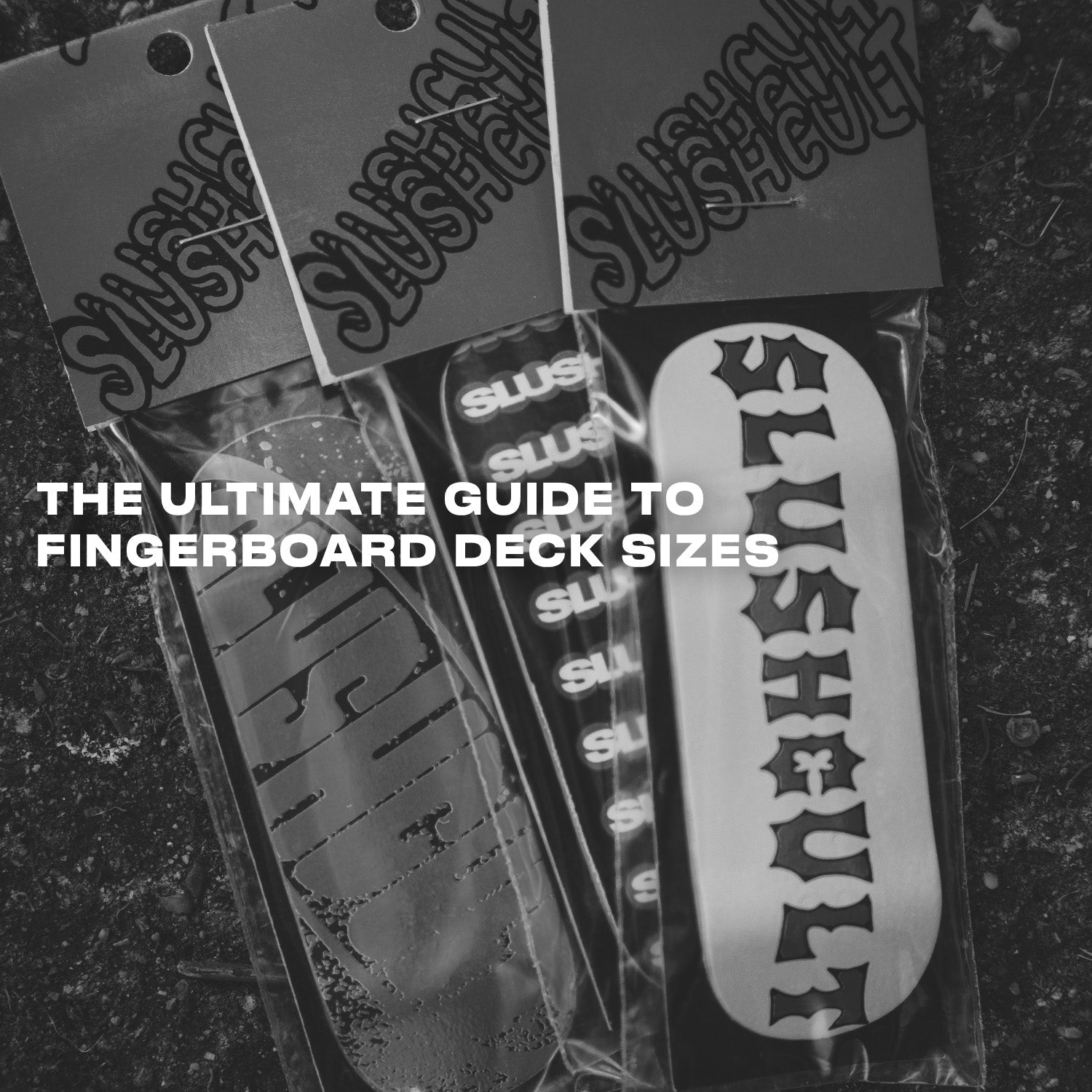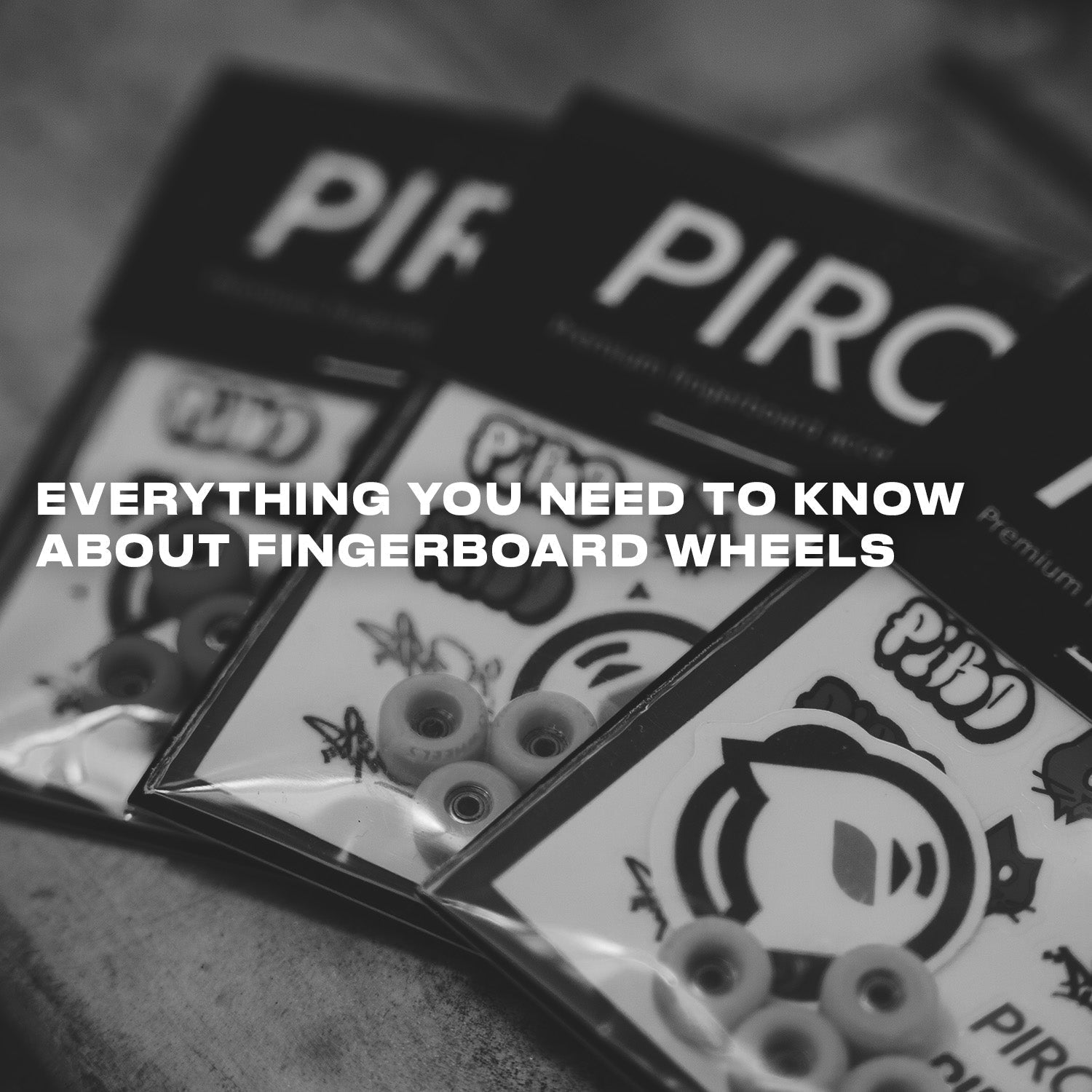Ultimate Guide to Fingerboard Deck Sizes: Choose the Right Width for Your Style 🎯
🔎 Why Deck Width Matters
Choosing the correct deck width impacts two key aspects:
-
Flip performance – Narrower decks are easier to flip.
-
Finger control – Wider boards offer more room for stability during tricks
If your fingers feel cramped or flips are inconsistent, width might be the culprit.
📏 Common Deck Widths & What They Mean
29–30 mm – Thin & Agile
-
Inspired by early Tech Decks, this width offers fast flips and a skateboard-like feel .
-
Ideal for lightweight tricks—great for flyers or minimalist setups.
-
Limited truck and deck availability; often best for retro-style riders.
32 mm – The Gold Standard
-
Widely considered the “sweet spot”—balances control and flipability
-
Well-suited for all skill levels and finger sizes.
-
Vast selection of decks and trucks; highly customizable.
33mm – The In-between
-
Bridges narrow and wide options—adds comfort without losing agility
-
Offers flexibility for riders wanting something broader than standard but not overly large.
34 mm – Max Comfort & Control
-
Popular among those with larger hands or preferring broader decks
-
Ideal for grinding tricks and smoother slides; may feel heavy to some.
-
Beginner-friendly and stable for consistent performance.
- 35 mm+ – Wide & Steady
-
Emerging as the widest mainstream size
-
Offers top-level control and steadiness, especially for technical tricks.
-
Requires compatible 34 mm trucks; currently less common than standard widths.
🧠 Factors to Choose the Right Width
1. Hand Size & Finger Span
-
Larger hands → 34 mm or wider.
-
Smaller hands → 32 mm or narrower.
2. Skill Level
-
Beginners: 32 mm or 34 mm for great versatility.
-
Pros: May explore 29–35 mm depending on trick preference.
3. Trick Style
-
Flip-heavy: Go lighter and narrower (29–32 mm).
-
Grind-focused: Prefer stability with wider decks (33–35 mm).
4. Concave & Feel
-
Steep (high) concave improves flick control.
-
Mellow (low) concave offers easier sliding
🛠 How to Test and Decide
-
Try different widths – Borrow or test while shopping.
-
Match trucks to deck width for optimal performance.
-
Roll with your gut—surface feel matters as much as specs.
-
Upgrade gradually, starting at 32 mm and testing 33/34 mm if needed.
🔑 Quick Recap Table
| Deck Width | Best For | Ideal For |
|---|---|---|
| 29–30 mm | Easy flips, retro-style, lightweight | Flip enthusiasts, nostalgic feels |
| 32 mm | Balanced, beginner-friendly, versatile | Most riders, all-around tricks |
| 33–33.5 mm | Mix of control and agility | In-betweeners, those scaling up |
| 34 mm | Bigger hands, grind/stability | Smooth slides, larger hands |
| 35 mm+ | Maximum control, wide platform | Hard-core grinders, max comfort seekers |
🧩 Other Tips You Might Consider
-
Length matters too: Most decks are ~100 mm long; width has greater impact
-
Deck material: Wood (5-ply maple) offers better pop; plastic decks feel duller
-
Concave preference is personal: try both and go with what feels right.
🚀 Final Takeaway
Start with 32 mm—it's the most versatile and widely used.
If your hands are bigger or you lean towards stability and grind-focused tricks, 34 mm is a solid jump up. And for maximum flip speed or retro style, go narrower (29–30 mm). The key is testing, adjusting, and picking what feels best under your fingers.



Leave a comment
This site is protected by hCaptcha and the hCaptcha Privacy Policy and Terms of Service apply.